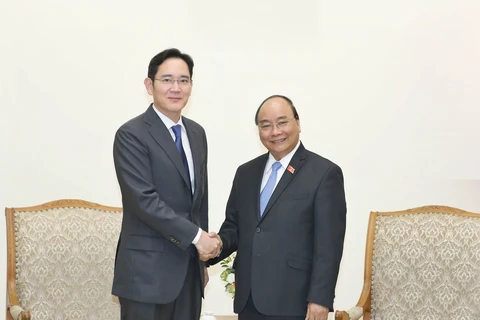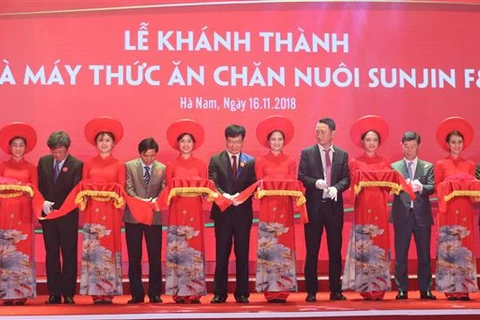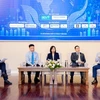 Heo Yoon, a professor from Sogang University Graduate School of International Studies and President of the Korean Association of Trade and Industry Studies, addresses the seminar on November 16. (Photo: VNA)
Heo Yoon, a professor from Sogang University Graduate School of International Studies and President of the Korean Association of Trade and Industry Studies, addresses the seminar on November 16. (Photo: VNA)Hanoi (VNS/VNA) - Over the past 25 years, the economic ties between Vietnam and the Republic of Korea have flourished, but the trade imbalance between the two countries has reached an alarming level.
Bark Tae-ho, former RoK Minister of Trade, spoke on the topic during a seminar in Hanoi on November 16.
The seminar – themed “Future prospects for Vietnam -RoK investment-trade ties” – was organised by the Global Commerce Institute Lee & Ko, the RoK’s Trade-Investment Promotion Agency and the Vietnam Chamber of Commerce and Industry.
At the event, delegates assessed achievements in Vietnam’s bilateral trade ties after three years of the Vietnam-Korea Free Trade Agreement (VKFTA) and discussed remaining issues.
“Vietnam is the RoK’s fourth biggest trade partner after China, the US and Japan,” Bark Tae-ho said. “Two-way trade jumped from 500 million USD in 1992 to 64 billion USD in 2017, 14.8 billion USD of which came from Vietnam’s exports, up 30 percent from the previous year, and 46.7 billion USD from its imports, up 45.3 percent.”
“Two-way trade is expected to grow to 100 billion USD by 2020, equivalent to an annual increase of 18 per cent over the next two years,” he said.
“The RoK is the third largest export market for Vietnam after the US and China,” he said. “It is also Vietnam’s second largest import market behind China.”
Since the VKFTA took effect in 2015, Korean firms have capitalised on lower tariff duties under the FTA to boost exports to Vietnam while Vietnamese firms have not taken the same step. As a result, Vietnam’s trade deficit with the Republic of Korea has widened sharply, Bark said.
According Bark, exports from the RoK to Vietnam in 2017 were worth 48 billion USD, up 70 percent after three years of the VKFTA. However, exports from Vietnam to the RoK that year reached only 17 billion USD.
In 2017, Korean firms poured 1.9 billion USD into projects in Vietnam, which spent only 4 million USD on projects in the RoK.
The RoK remains by far the largest foreign investor in VIetnam, having signed on to pour 58 billion USD into more than 6,500 foreign direct investment (FDI) projects in the country as of the end of October, said Nguyen Duy Loi, Deputy Editor-in-Chief of the World Economic and Political Issues, Institute of World Economics and Politics under the Vietnam Academy for Social Science.
“Vietnam is a key investment destination of Korean firms in the ASEAN region,” Loi said. “Among 8,600 Korean enterprises investing in ASEAN, about 5,500 are in Vietnam.”
“Assessing products imported from Vietnam to the RoK by technological level, 44 percent of the products are using low technology and only 20 percent of them use high technology,” said Heo Yoon, a professor from Sogang University Graduate School of International Studies and President of the Korean Association of Trade and Industry Studies. “The rest use medium technology or are resource-based products.”
He added that Korean investment in Vietnam is moving from labour-intensive industries to capital-intensive industries, especially in manufacturing sectors.
In the future, Vietnam and the RoK should speed up the negotiation of the Regional Comprehensive Economic Partnership (RCEP), promote infrastructure exports from the RoK to Vietnam, widen and deepen the machinery production network between the two countries and accelerate technology transfer from the RoK to Vietnam as the Vietnamese government has changed the FDI strategy to induce more high-value-added industries, Heo said.-VNS/VNA
VNA






















